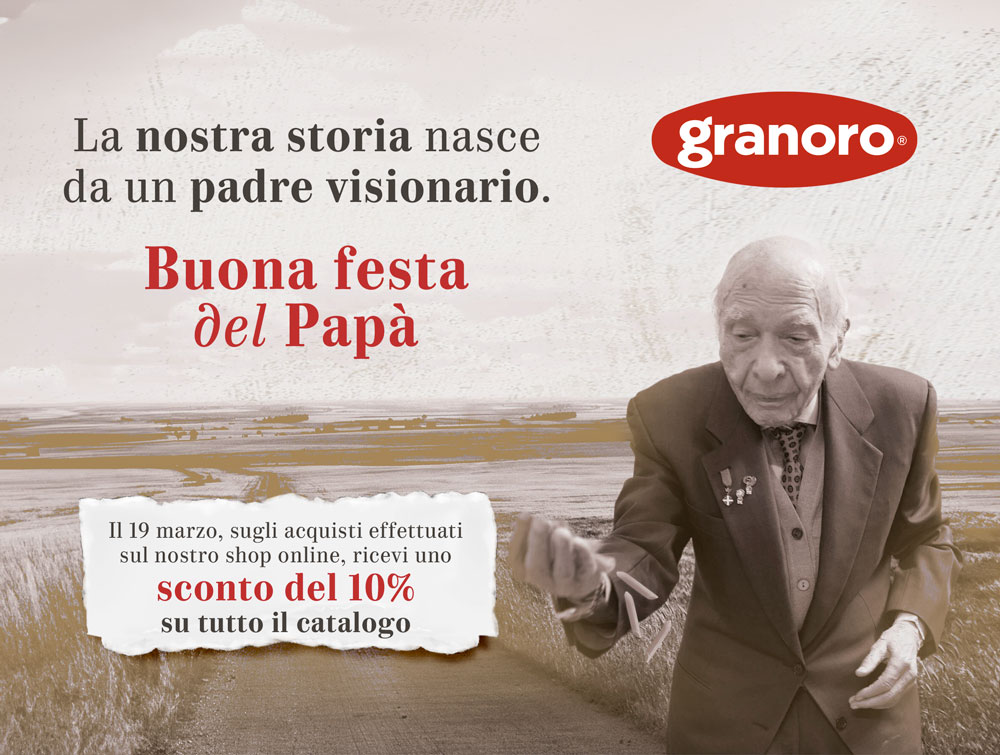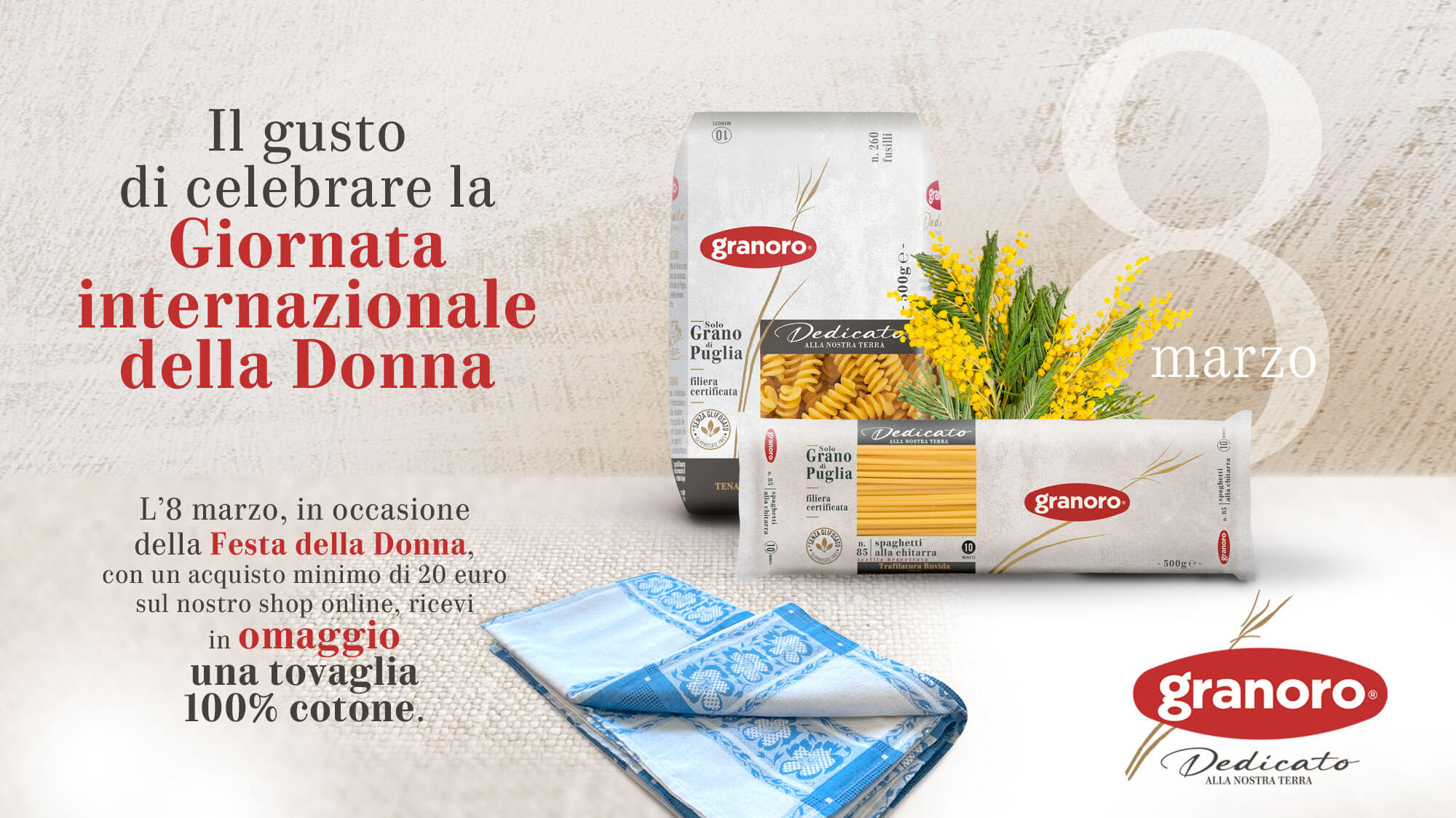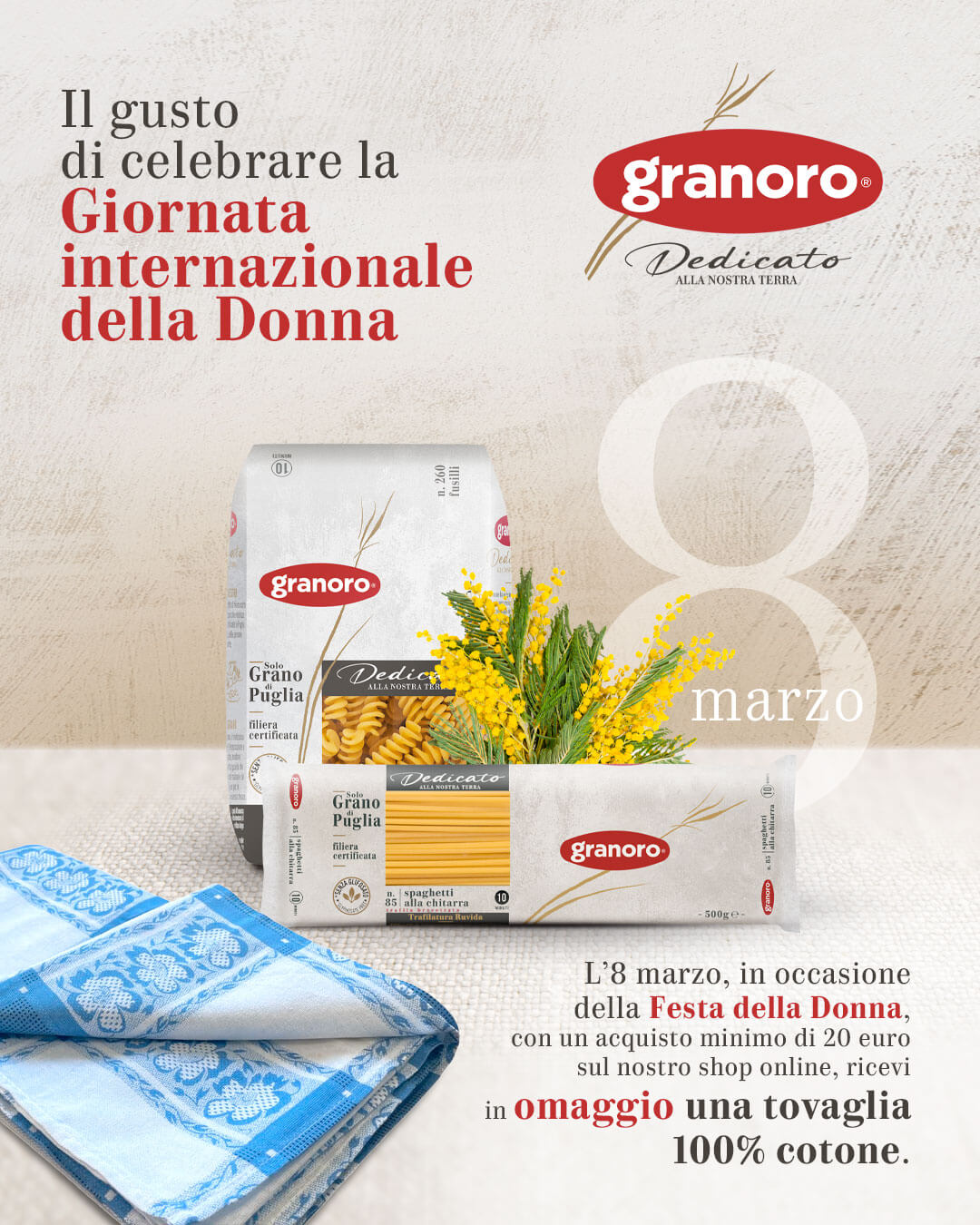The freedom of taste
Organic is a conscious lifestyle: a choice to be carried forward every day.
Gluten Free Granoro
A balanced recipe, with rice flour, corn (white and yellow) and quinoa


The smell and taste of the Granoro Gluten-free line are typical of corn, rice flour and the vegetable hint of quinoa. Granoro has chosen and studied the mix with quinoa to rebalance the supply of fibre, mineral salts and proteins of this line, since rice and corn have none. Mixing the three flours gives the product a golden colour very similar to durum wheat pasta and excellent firmness after cooking, its porous surface allows it to bind the condiments well.
A gluten-free but balanced diet
Gluten is not a fundamental protein in our diet. Eliminating gluten therefore does not create nutritional imbalances. The only negative aspect is that eliminating gluten eliminates proteins, which cereals contain in good quantities. For this reason, Granoro has also used Quinoa in the mix, and for those who need to replace cereal flours with gluten-free flours and therefore flour without proteins, it is recommended that they eat legumes, fruit and vegetables to compensate for the glycemic peaks resulting from the greater presence of starches and sugars, a peculiar characteristic of Gluten-Free foods.
Choosing GlutenFree Granoro is:
- Tasteful eating, even without gluten
- Ensuring that your body has an adequate supply of important nutrients
- Knowing that you are eating a safe product
The choice of Gluten-Free Granoro ingredients

Granoro Gluten-Free Products
Gluten-Free pasta with quinoa flour
A balanced recipe, with rice flour, corn (white and yellow) and quinoa!
The purpose of choosing Quinoa is to rebalance the nutritional contributions of rice and corn, to obtain a food that goes well beyond only eliminating gluten!
Our Gluten-Free has the typical smell and taste of corn, rice flour and the hint of vegetables coming from Quinoa.
The mix of these three flours provides colour, firmness and flavour, without having to give up the taste of traditional pasta. The roughness of the surface allows the condiments to bind well.
The choice of Gluten-Free Granoro ingredients
Corn
Corn has a good amount of fibre, it contains antioxidants, it is very low in lipids (fats), and rich in vitamin B12.

Rice
Rice is extremely nutritious and is rich in starch, potassium, it contains little sodium, while proteins are present in limited quantities (max 7%).

Quinoa
Quinoa is a pseudocereal that is very rich in fibre, vitamins B and A, mineral salts and it has a low sodium content.


Corn
Corn has a good amount of fibre, it contains antioxidants, it is very low in lipids (fats), and rich in vitamin B12.
Rice
Rice is extremely nutritious and is rich in starch, potassium, it contains little sodium, while proteins are present in limited quantities (max 7%).


Quinoa
Quinoa is a pseudocereal that is very rich in fibre, vitamins B and A, mineral salts and it has a low sodium content.
Quinoa
Quinoa is a plant that grows in the Andes, at an altitude of up to 4,200 meters, even in extreme conditions. Although it has characteristics very similar to those of oats, barley, wheat, etc., it is NOT of the gramineae family, but a herbaceous plant that produces small seeds.














